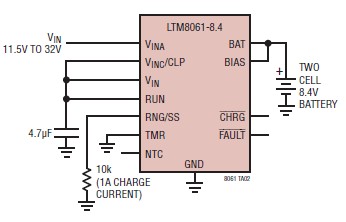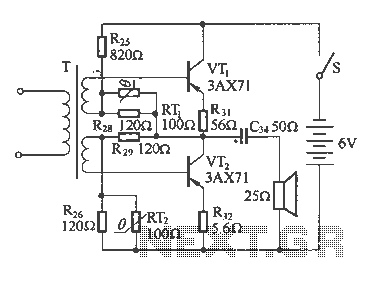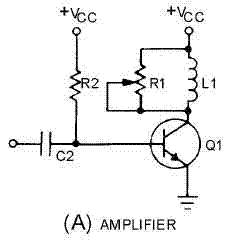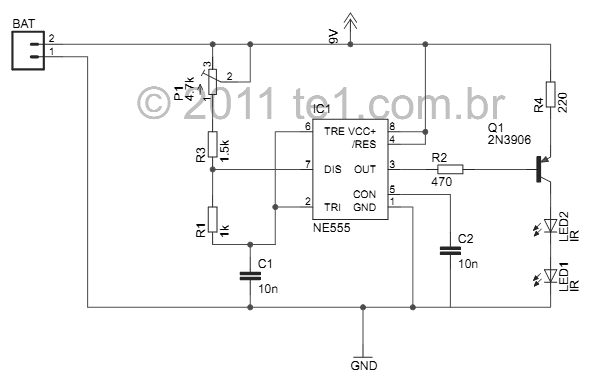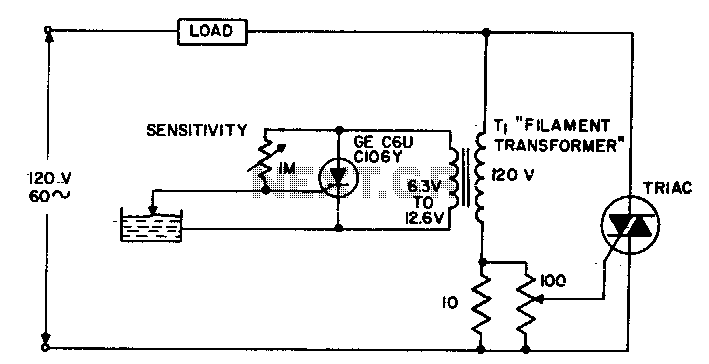
Simple Adjustable Sine/Square Wave Oscillator Circuit schematic with explanation

This circuit generates sine and square wave signals with frequencies ranging from below 20 Hz to above 20 kHz. The advantage of this circuit diagram is that the output frequency can be adjusted by varying the variable resistor R6.
The circuit primarily consists of an oscillator configuration capable of producing both sine and square wave outputs. The frequency of oscillation is determined by the components involved, particularly the variable resistor R6, which allows for fine-tuning of the frequency output.
The oscillator can be built using operational amplifiers or dedicated waveform generator ICs. In a typical configuration, the output from the oscillator is fed into a waveform shaping stage to produce a clean sine wave output. This stage may include filtering components such as capacitors and resistors that smooth the output signal, reducing harmonics and noise.
For the square wave output, the circuit may utilize a comparator or a Schmitt trigger configuration that converts the sine wave into a square wave. This conversion is crucial for applications requiring digital signal processing or timing applications.
The circuit's frequency range, extending from below 20 Hz to above 20 kHz, makes it suitable for various applications, including audio signal generation, testing of audio equipment, and educational demonstrations in electronics courses. The ability to adjust the frequency using R6 provides flexibility for users to set the desired frequency for their specific application.
Power supply considerations for the circuit should also be noted. A stable DC supply is essential for consistent performance, and bypass capacitors may be added to the power supply lines to filter out any noise that could affect the oscillator's operation.
Overall, this circuit serves as a versatile tool for generating sine and square wave signals across a wide frequency spectrum, making it an essential component in many electronic applications.This circuit provides sine and square wave at frequency of below 20Hz up to above 20KHz. The benefit of this circuit diagram is that you can adjust the output frequency by varry the variable resistor of R6. 🔗 External reference
The circuit primarily consists of an oscillator configuration capable of producing both sine and square wave outputs. The frequency of oscillation is determined by the components involved, particularly the variable resistor R6, which allows for fine-tuning of the frequency output.
The oscillator can be built using operational amplifiers or dedicated waveform generator ICs. In a typical configuration, the output from the oscillator is fed into a waveform shaping stage to produce a clean sine wave output. This stage may include filtering components such as capacitors and resistors that smooth the output signal, reducing harmonics and noise.
For the square wave output, the circuit may utilize a comparator or a Schmitt trigger configuration that converts the sine wave into a square wave. This conversion is crucial for applications requiring digital signal processing or timing applications.
The circuit's frequency range, extending from below 20 Hz to above 20 kHz, makes it suitable for various applications, including audio signal generation, testing of audio equipment, and educational demonstrations in electronics courses. The ability to adjust the frequency using R6 provides flexibility for users to set the desired frequency for their specific application.
Power supply considerations for the circuit should also be noted. A stable DC supply is essential for consistent performance, and bypass capacitors may be added to the power supply lines to filter out any noise that could affect the oscillator's operation.
Overall, this circuit serves as a versatile tool for generating sine and square wave signals across a wide frequency spectrum, making it an essential component in many electronic applications.This circuit provides sine and square wave at frequency of below 20Hz up to above 20KHz. The benefit of this circuit diagram is that you can adjust the output frequency by varry the variable resistor of R6. 🔗 External reference
